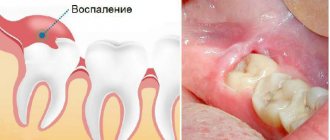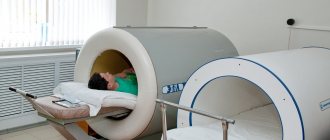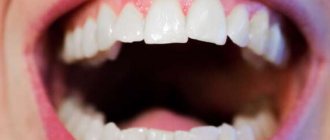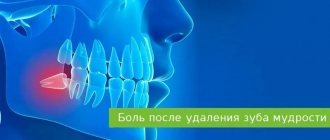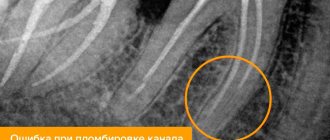26.11.2019
Removing a tooth that has become sore is a difficult process that requires surgery, as well as careful attention to oral care. Let's look at what happens to the gums when a tooth is removed, in which cases sutures are necessary, and what preventative measures are taken.
Why do you need stitches after wisdom tooth removal?
Removing the “eight” is a surgical procedure that involves dissecting the tissue in the area of the “wise” tooth. After the tooth is extracted, the gum must be sutured so that it heals without complications. A classic example is when, after suturing, a person is scheduled for a follow-up visit to the dentist. At this stage, it is important to evaluate the process of tissue regeneration and make sure that there are no complications after wisdom tooth removal.
When else do you need stitches? For example, when a dental operation needs to be performed urgently, the dentist does not have the opportunity or time to perform blood clotting tests on the patient (a common picture during dental operations after injuries). In this case, the stitches perform the task of preventing bleeding.
Pain after suturing the hole: pathology and norm
Pain in the suture area is normal. Injury to the gums due to major surgery causes pain, especially in the first days.
The patient must understand that tooth extraction means damage to the ligaments that hold the tooth in the gum, rupture of nerve fibers and blood vessels. During the operation, the pain is blocked by the anesthetic, but after the anesthesia wears off, discomfort is observed at the site of the sutures.
The following sensations should not cause concern:
- aching pain for the first 24 hours after removal;
- slight swelling of the tissues in the surgical area
- discomfort and slight pain when opening the mouth;
- short-term increase in body temperature.
In rare cases, after a complex removal, the patient may experience chills, facial swelling, purulent discharge, cough, and nausea. These signs should not be ignored - it is better to immediately seek help from a specialist.
How do doctors apply stitches?
Sutures are the junction of soft tissues that were cut to remove a wisdom tooth from the socket. As a rule, figure eights “sit” very firmly in the jaw, are attached to the bone by two roots, and sometimes stand unevenly, resting against neighboring teeth. There is no way to do this without a surgical incision.
To carefully remove a molar, the surgeon makes one or two incisions in the gum, after which he loosens the tooth with a special tool and removes it. Bleeding occurs at the root site; sutures are carefully placed with special threads.
The first day after suturing, bleeding should not be too active - it is the sutures that seem to hold it back. They also connect layers of dissected tissue, which naturally grows together. With high-quality sutures, there should be no severe pain or discomfort, and on the third to fifth day after the operation, the person will not feel any swelling of the gums in the operated area.
The sutures prevent infection from entering the open wound. The better the wound is closed with sutures, the lower the risk of complications and accidental infection.
A follow-up visit after surgery is scheduled 5–7 days later. If the patient is bothered by the wound earlier, he makes an emergency visit.
The dentist assesses the condition of the gums, may prescribe an x-ray, and examines the stitches in detail. If the wisdom tooth removal went without complications, the sutures can be removed after a week. If complete healing of the wound has not occurred, the sutures remain for several more days.
Dentistry for those who love to smile
+7
Make an appointment
Possible complications
Pain and swelling of the gums at rest, difficulty chewing, evening fever in the first two days after surgery and suturing are considered normal - this is a response to surgical trauma. If the symptoms increase, it means that a purulent complication is developing. A visit to the doctor is needed, opening the wound with removal of the suture threads, washing it, re-suturing or draining it, and taking antibiotics.
Complications arise when wound hygiene is not observed, infection occurs, or particles of a tooth or root are left in the wound.
Continued bleeding from the surgical area is possible if the stitches come apart.
Seam divergence
If the suture breaks apart after tooth extraction, this may indicate inflammation of the periosteum - periostitis.
When infected, the wound area swells, there is pain, discharge of pus, which can push out the threads, and the edges of the tissue diverge. Healing is delayed, and there is a risk of developing ugly scars.
If the sutures on the gums come apart, it is necessary to visit a surgeon to determine the cause and eliminate it with re-suturing of the wound in the oral cavity.
Maintains healthy gums by maintaining oral hygiene and following the dentist’s recommendations after any dental surgery.
How to understand that complications have arisen after suturing?
Alarming symptoms after removing the “eight” are as follows:
- heavy bleeding that lasts more than a day;
- severe pain, throbbing pain that prevents you from sleeping or leading a normal life;
- very large swelling;
- redness in the intervention area;
- blood in saliva in the first three days after the intervention;
- elevated body temperature.
In all these cases, you must consult your doctor. It is possible that stitches will have to be stitched again to avoid complications.
Remember that removing teeth does not hurt, and removing stitches does not hurt either! The main thing is that this work is performed by a professional.
Types of suture materials in surgical dentistry
In dental clinics, different types of threads are used to fix the edges of the sockets during tooth extraction:
- Synthetic, self-resorbable due to hydrolysis reaction. These are threads with a hypoallergenic composition that guarantee reliable fixation of the wound edges for about a month.
- Natural, absorbable, enzyme-based surgical suture material. The stitches disappear in 10-100 days, and the thread segments are safely removed from the human body.
- Synthetic regular threads. Made from silk, nylon, polyester. They require mechanical removal after complete healing of the hole.
Why do the seams come apart?
According to statistics, implant failure does not occur very often. However, such a complication can lead to serious consequences, the main one being non-healing of the structure. Let's look at the most common reasons for this phenomenon:
- Individual characteristics of the body, mainly the incorrect structure of the jaw or rejection of the material from which the thread is made can play a role.
- Not sterile conditions, due to which the wound got infected. Severe swelling and hyperemia occurs, which causes the seam to diverge.
- Neglecting advice from specialists. This may include errors in nutrition or lack of hygiene and medication measures.
- Poor quality surgical thread.
- Insufficient experience of the doctor, due to which the suturing process was performed incorrectly.
Wisdom teeth do not erupt
You should contact the dentist even if the molar does not cause discomfort. It can remain in this state for up to a certain time, since dental roots grow quickly, and over time they will interfere with the neighbor’s teeth. If a tooth remains in the gum for a long time, then it is a serious provocateur of caries and decay. This arrangement of the rudiment causes injury to soft tissues, resulting in periodontitis, periodontal disease and other unpleasant diseases.
Indications for the procedure
Removing the remaining tooth from the alveolar socket is a surgical procedure that affects the tissue around the root part. The decision to apply suture material is determined by the doctor’s intention to prevent infection from entering the wound - according to statistics, suturing the hole reduces the likelihood of infection by 98%.
The residual that forms in the gum structure after extraction is a blood clot, which acts as a protective barrier to protect the socket from bacteria. Applying sutures eliminates the possibility of its displacement, preserving the area from the negative influence of the pathogenic environment. Suturing reduces the risk of the formation of inflammatory processes, as well as purulent areas that arise due to food particles stuck inside the wound cavity. In addition, the procedure is recommended at the first symptoms of edema formation, and promotes accelerated healing and fusion of wound edges.
Clinical indications considered as a basis for the procedure include the following situations:
- Extraction of wisdom teeth, accompanied by profuse bleeding that persists for several hours after the operation;
- The absence of a blood clot acting as a barrier to potential infection;
- Removal of completely destroyed elements, as well as impacted or dystopic units of the dentition.
The decision to apply sutures and suturing the alveolar socket is made based on the clinical picture observed in the postoperative period.
Prevention of seam dehiscence
The postoperative wound is sutured with strong elastic threads. They do not diverge spontaneously. But if the patient violates the doctor’s recommendations, such a complication is possible. To prevent sutures from coming apart after implantation, you need to:
- do not eat for three hours after implant placement;
- for the first two days, apply cold compresses according to the regimen prescribed by the dentist;
- use rinses or baths prescribed by your doctor;
- do not chew on the side of the operation;
- refrain from spicy, hot, hard, sticky foods until the stitches are removed;
- give up physical activity.
Types of material and types of stitches
Because permanent unit extraction is a complex procedure comparable to other forms of surgery, adherence to protocol is an important factor to ensure its safety. A fairly common occurrence is a wide crown and a deepened root part of the tooth. Such a structure requires additional incisions during tooth extraction, which are sutured at the end of the operation. The use of high-quality suture material is another significant point that affects the outcome of the entire procedure.
The key goal of postoperative manipulation is to provide the conditions necessary for rapid tissue healing. The material used for suturing the hole is a foreign body that remains in the soft tissues until they are completely restored. In modern dentistry, two categories of sutures are used:
- Absorbable sutures are threads for surgical operations, characterized by a sterile and durable structure, immunity to the transmission of infectious pathologies, and ease of use. Made from synthetic or natural materials, and do not require removal after regeneration;
- Non-absorbable sutures - as a rule, are a polymer or silk thread that is biologically compatible with the gum tissue. Stable and inexpensive, the suture material does not cause adverse reactions during wear, but requires repeated medical intervention after restoring the natural structure of the area that underwent surgery.
The choice of suturing technology depends on the specifics of the clinical case, and involves the use of interrupted or permanent stitches. As a rule, in most situations, the first method is used, when each stitch is separated from the rest and secured with a special knot. Continuous suturing reduces the duration of application, but is accompanied by the risk of damage to the threads and the entire structure as a whole.
How long do you need to walk with stitches?
The patient's actions depend on the type of suture material used by the doctor. If the doctor used a non-absorbable option, a control appointment is scheduled after 7-10 days. During the examination, the surgeon assesses the speed of healing and the condition of the wound. Decides on the need to remove sutures.
The procedure is quick and atraumatic. The thread is cut into small segments and painlessly removed from the gums. If the patient experiences discomfort and anxiety, the doctor can use topical anesthesia.
Self-absorbing sutures disintegrate on their own in about three weeks. The patient may not notice the material disappearing from the wound. Especially if healing is going well and the hole is not bothering you.
Duration of resorption and removal of sutures
The decision to remove the threads is made based on the results of an interim examination demonstrating the rate of tissue regeneration. Practice shows that the duration of wearing stitches is no more than a week, after which the area is examined for the presence of swelling, inflammatory processes and the stage of healing. If necessary, the wearing period can be extended by 2-3 days.
If the patient is highly susceptible to pain, suture removal is performed using local anesthesia. A prerequisite is complete treatment of the cavity
WHEN DISSORBABLE THREAS ARE USED
This type of medical materials is used when suturing surgical wounds: such manipulations are carried out both on the surface of the skin, during cosmetic operations, and in deep layers of tissue, for example, during transplantation of internal organs.
The main function of such sutures is to maintain internal tissues in a stable condition until they grow together and begin to function without outside support.
It is advisable to use absorbable sutures in cases where the patient does not have the opportunity to return to the surgeon to remove the applied staples, clamps or sutures made of durable materials.
The most common use of absorbable sutures in gynecology is for suturing the perineum, tears in the vagina or cervix during natural childbirth. Studies have shown that during the postpartum period, the threads removed themselves within 2-4 months.
HOW LONG DOES THE THREAD DISSORB AFTER THE OPERATION?
To understand how many days it takes for the threads to dissolve, you must first ask your surgeon what material was used for suturing. The doctor will not only clarify the information you are interested in, but will also advise how long it will take for the stitches to completely dissolve. Only a specialist can competently assess this process, taking into account the individual characteristics of the patient.
But in general, you need to know how long it takes for the threads to dissolve by looking at the type of threads used during the operation:
- Catgut begins to lose its fixing properties after a month, while the threads finally dissolve only at the end of the 4th month of wound healing;
- Lavsan is often used in cosmetology, since the material begins to deteriorate already on the 10-12th day, but this process can take up to 1.5 months;
- Vicryl has an average degree of resorption: the threads lose their strength after 2-3 months.
In this case, it is worth making allowances for proper care of the postoperative wound according to the scheme recommended by the supervising surgeon. If it is not handled correctly and the rules of personal hygiene are neglected, healing may be delayed and the process of suture resorption may worsen.

